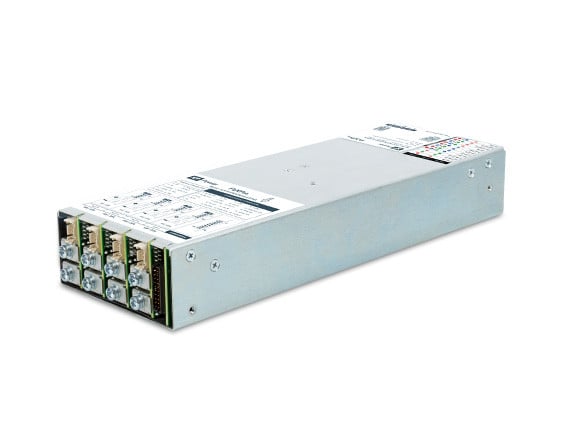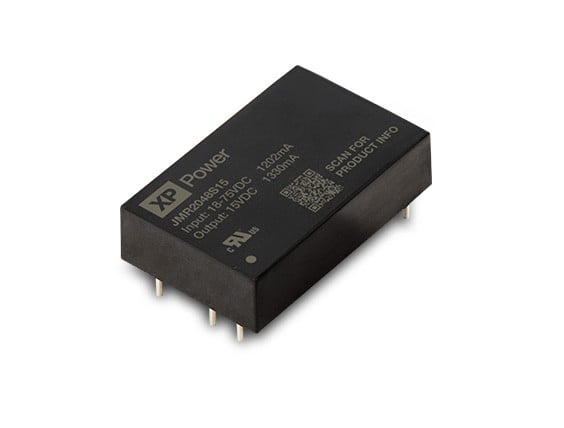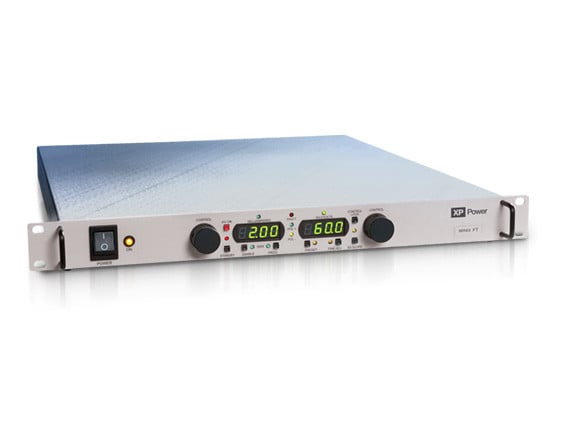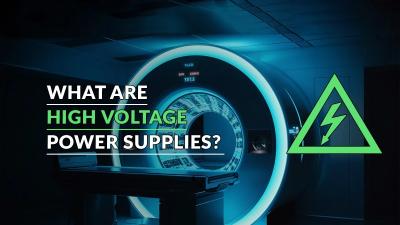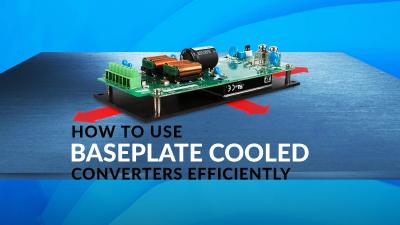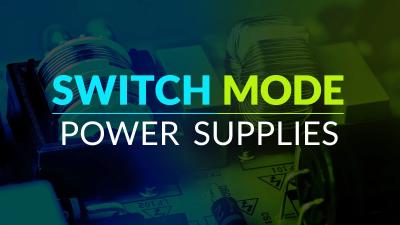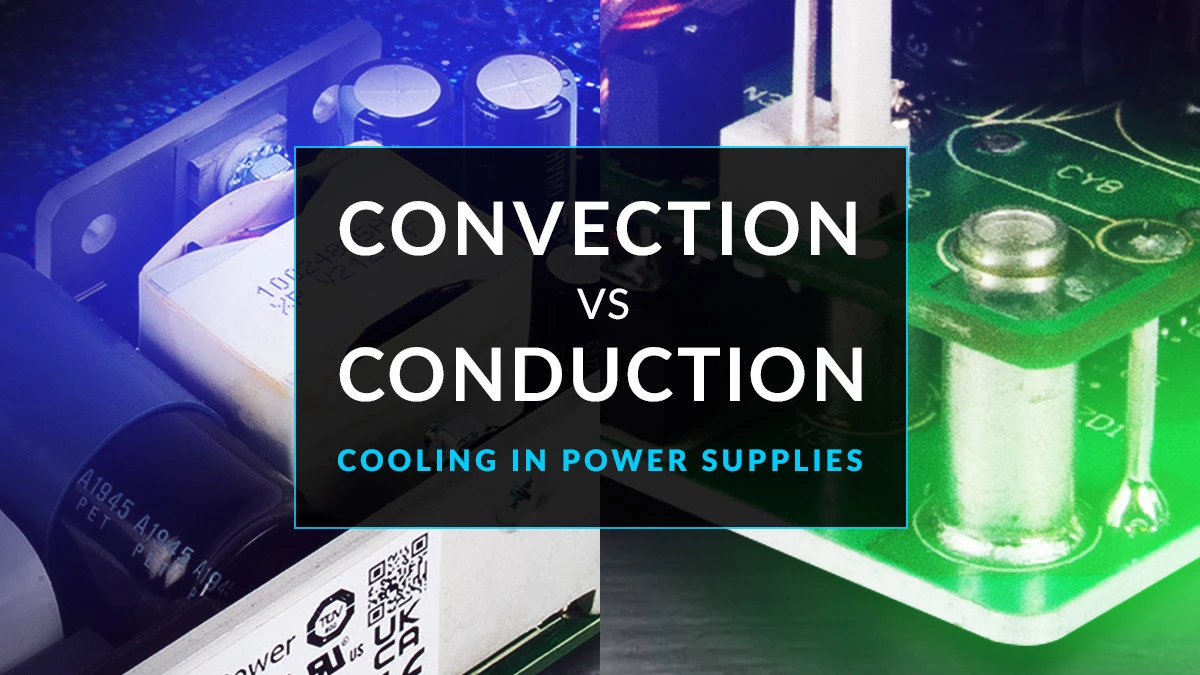
When it comes to cooling power supplies, various methods are employed, including conduction, convection and fan-cooling. In this concise article, we dive into the key differences between conduction and convection cooling, helping you understand how each method works and where they are most effective.
What is a convection-cooled power supply?
A convection-cooled power supply dissipates heat through natural convection, avoiding the need for forced cooling methods such as fans or liquid cooling systems. These power supplies are reliable and quiet, making them ideal for applications that benefit from having no moving parts and reduced noise. However, they may have limitations in power output, so it’s important to consider the thermal conditions you need them to cope with to ensure optimal performance.
What are conduction-cooled power supplies?
A conduction-cooled power supply disperses heat through direct contact with a heat sink or chassis, rather than using convection or forced-air cooling. They are ideal for environments where high reliability, durability and maintenance-free operation are critical. As they use thermal conduction to transfer heat away from internal components, careful integration with external cooling structures is needed to ensure efficient heat dissipation.
When are convection-cooled power supplies the best solution?
Convection-cooled power supplies offer silent operation, high reliability and minimal maintenance. With no moving parts like fans, they significantly reduce the risk of mechanical failure.
When would you choose a conduction-cooled power supply?
Conduction-cooled power supplies are perfect for maximizing power density in space-constrained environments. They eliminate the need for fans or airflow channels, making them ideal for applications requiring high reliability and long lifespans, such as telecommunications, medical devices and critical infrastructure.
In what types of applications are convection-cooled power supplies most appropriate?
Low maintenance requirements make convection-cooled units particularly suitable for remote installations or applications where access is difficult, such as outdoor telecom equipment and embedded industrial systems. Their design allows for compact installations in space-constrained settings like portable devices and tight enclosures. Without a fan, these power supplies are less susceptible to dust and debris which makes them ideal for factories, outdoor installations and contaminated environments.
Why would you select a conduction-cooled power supply?
Conduction-cooled power supplies are the best solution for situations where robust, reliable and maintenance-free operation is essential. These power supplies can cope with the dust, moisture, and contaminants that might compromise the effectiveness of fan-cooled systems. You’ll find them a reliable choice for military, aerospace and industrial applications.
How does better cooling improve a power supply’s performance?
Better cooling significantly enhances a power supply's performance by improving its efficiency, reliability, and lifespan. Effective thermal management will lower the operating temperature of the power supply components, ensuring they function within their optimal performance range. This reduction in temperature minimizes power losses to give higher energy conversion efficiency. Cooler components also experience less thermal stress, which reduces the likelihood of sudden failures and extends their operational life.
5 key considerations when deciding between convection or conduction-cooled power supplies
1. Determine power requirements
First, you will need to assess the total power consumption of your system, including peak and average power needs and then identify the required output voltages and currents for your application. It's a good idea to add a safety margin of around 20-30% to the calculated power to ensure reliable operation.
2. Identify environmental and cooling constraints
Next, determine the operating temperature range of the environment where the power supply will be used. You'll need to decide between convection cooling and conduction cooling, ensuring that the power supply’s physical dimensions and mounting options fit within your system’s design.
3. Evaluate efficiency and thermal performance
Higher efficiency reduces heat generation, which is crucial for both convection and conduction cooling. Check the power supply’s thermal performance to ensure it can operate efficiently within your system’s thermal constraints.
4. Assess reliability and compliance
Look for power supplies with a good track record and reliable performance, paying attention to MTBF (Mean Time Between Failures) ratings. Ensure the power supply meets necessary certifications and standards, such as CE, UL, and RoHS. Your device should of course include essential protection features, such as over-voltage, over-current and thermal shutdown.
5. Review manufacturer support and documentation
Finally, what level of technical support and customer service is provided by the manufacturer? Make sure comprehensive datasheets, user manuals and application notes are all available. Check the warranty terms and the availability of after-sales service to ensure long-term support for your power supply.
Download our comprehensive reference resource, “Your Essential Guide to Power Supplies,” and gain access to a wealth of technical information. This easy-to-use guide is designed to help you navigate the complexities of power supply systems with confidence.
